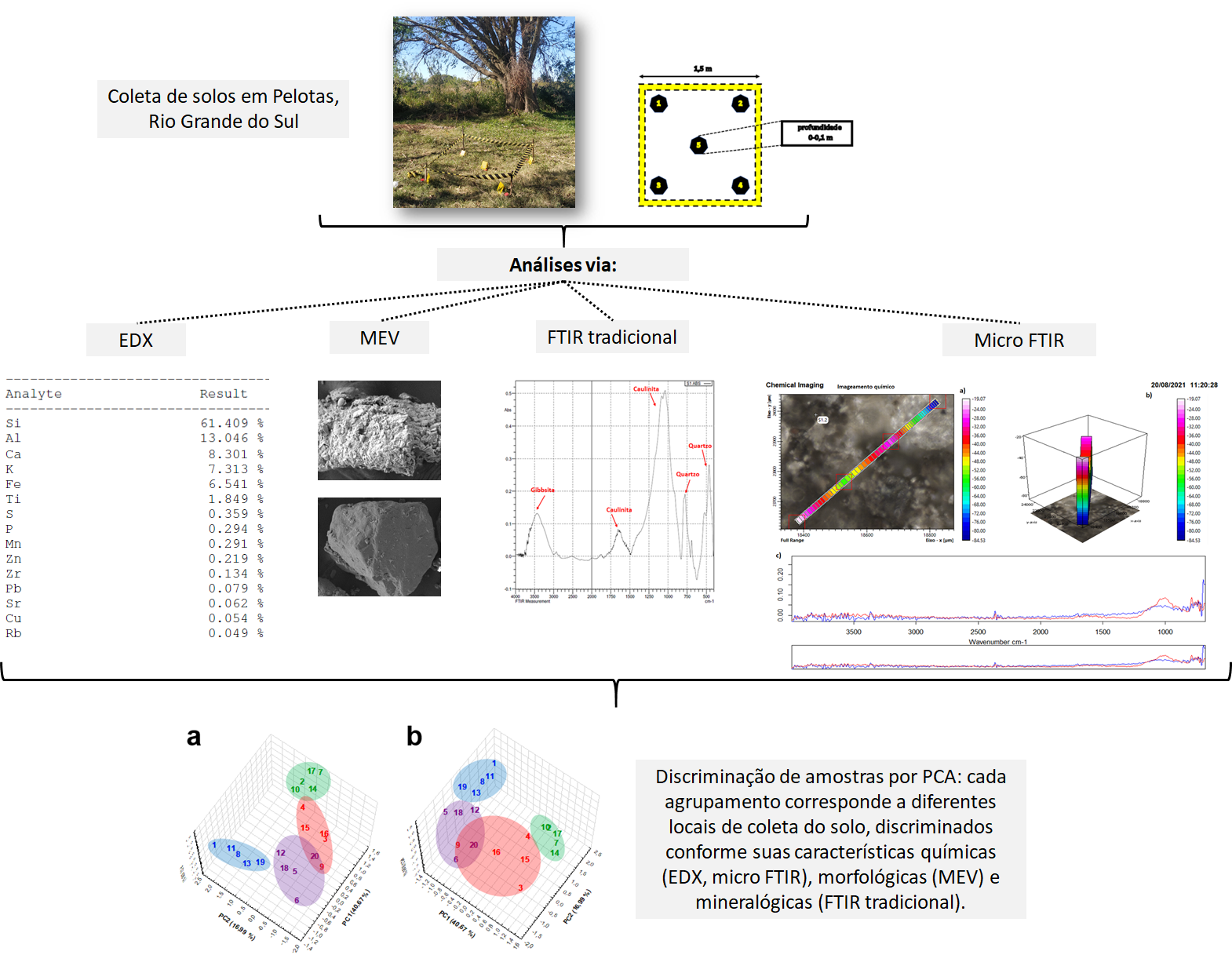DISCRIMINAÇÃO DE SOLOS COLETADOS EM CENA DE CRIME SIMULADA
DOI:
https://doi.org/10.36524/ric.v9i3.2205Keywords:
solos forenses, morfologia do solo, silício, caulinita, granitoAbstract
Soil traces are important as forensic evidence due to their potential to adhere and transfer on different types of surfaces of different objects and even people. To investigate the potentiality of analytical techniques in the discrimination of different soils in Pelotas, State of Rio Grande do Sul, Southern Brazil. Five collections were carried out, in accordance with the Standard Operating Procedure for Soil Collection in Crime Scenes, in four different locations in the municipality, respecting the cardinal points to cover them in a representative way according to the type of soil, and from a perspective of simulated crimes in these locations. Analytical techniques of scanning electron microscopy (SEM), energy dispersive X-ray spectroscopy (EDS) and traditional and micro Fourier transform infrared spectroscopy (µ-FTIR, respectively) were used. The analyzes were performed blindly so that there was no interference in the final results. As a conclusion of the analysis and comparison of the soil, the results support the origin of the soil in each of the collected areas, thus making the methodologies employed in the article useful and potential supports for forensic science.

Downloads
Published
Issue
Section
License
Copyright (c) 2023 Revista Ifes Ciência

This work is licensed under a Creative Commons Attribution-NonCommercial-NoDerivatives 4.0 International License.
Autores que publicam nesta revista concordam com os seguintes termos:
- Autores mantém os direitos autorais e concedem à revista o direito de primeira publicação, com o trabalho simultaneamente licenciado sob a Licença Creative Commons Attribution que permite o compartilhamento do trabalho com reconhecimento da autoria e publicação inicial nesta revista.
b. Autores têm permissão e são estimulados a publicar e distribuir seu trabalho online (ex.: em repositórios institucionais ou na sua página pessoal) a qualquer ponto antes ou durante o processo editorial, já que isso pode gerar alterações produtivas, bem como aumentar o impacto e a citação do trabalho publicado (Veja O Efeito do Acesso Livre).


